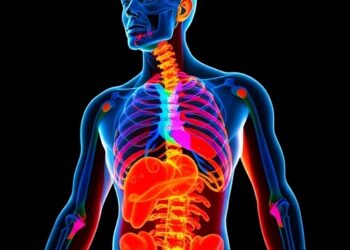Quick decisions are more likely influenced by initial biases, resulting in faulty conclusions, while decisions that take time are more likely the result in better information, according to new research led by applied mathematicians at the University of Utah.
Quick decisions are more likely influenced by initial biases, resulting in faulty conclusions, while decisions that take time are more likely the result in better information, according to new research led by applied mathematicians at the University of Utah.
A team that included Sean Lawley, an associate professor of mathematics, and three former or current Utah graduate students used the power of numbers to test a decision-making model long used in psychology.
They developed a framework to study the decision-making processes in groups of people holding various levels of bias.
“In large populations, what we see is that slow deciders are making more accurate decisions,” said lead author Samantha Linn, a graduate student in mathematics. “One way to explain that is that they’re taking more time to accumulate more evidence, and they’re getting a complete picture of everything they could possibly understand about the decision before they make it.”
The findings were reported this week in the journal Physical Review E.
The researchers explored how initial biases of individuals, or “agents,” in a group affect the order and accuracy of their choices. The goal was to determine whether a decision was driven mainly by an agent’s predisposition as opposed to accumulated evidence.
They found, in short, the faster the decision was made, the less informed it was and more likely to be wrong.
“Their decisions align with their initial bias, regardless of the underlying truth. In contrast, agents who decide last make decisions as if they were initially unbiased, and hence make better choices,” the study states. “Our analysis shows how bias, information quality, and decision order interact in non-trivial ways to determine the reliability of decisions in a group.”
The team set out to analyze the “drift diffusion model,” which has been well-established in the field of psychology for decades.
They built a model in which groups of agents choose between two options, one reflecting a “correct” decision and the other an “incorrect” decision. The model assumes the agents are acting independently and rationally, that is they are not influenced by each other.
“It really illustrates the power of math that the same equations can describe one phenomenon and then they can describe something completely different,” Lawley said. “The math doesn’t care. The equations don’t care. Seven days or seven apples. The number seven doesn’t care. And in this context, the math doesn’t care if you’re talking about animals searching for food or people making a decision.”
As a researcher, Lawley seeks to apply mathematics to understand a broad range of phenomena. The results can be eye-opening.
In one recent study, for example, he helped develop a model for determining how long someone can delay the onset of menopause through implanting their own preserved ovarian tissue.
In this latest endeavor, Lawley and his colleagues sought to understand the roles of bias and deliberation in how individuals make decisions, whether it’s trivial, like what topping to order on a pizza, or consequential, like which college to attend.
In the team’s model of decision-making in large groups, early decisions tend to be made by agents with the most extreme predispositions. These choices square with the initial bias regardless of the quality of the evidence the decider had access to.
By contrast, late deciders do not depend on their initial bias; rather their decisions reflect accumulated evidence and are more likely to be “correct.”
“Depending on what decision is being made, if there’s data to inform the parameters, now you have numbers that are going into this that tell you how biased these fast deciders may have been or how unbiased,” Linn said. “Our model is not just about deciding between two things. It can be any number of decisions, and we make very few assumptions.”
The study “Fast decisions reflect biases, slow decisions do not,” was published Aug. 12 in Physical Review E. Co-authors Bhargav Karamched and Zachary Kilpatrick are former U mathematics graduate students, now on faculty at Florida State University and University of Colorado Boulder, respectively. Co-author Krešimir Josić is a professor of mathematics at the University of Houston. The scholars’ research is supported by grants from the National Science Foundation and the National Institutes of Health.
Journal
Physical Review E
Method of Research
Computational simulation/modeling
Subject of Research
Not applicable
Article Title
Fast decisions reflect biases; slow decisions do not
Article Publication Date
12-Aug-2024
COI Statement
No statement provided




